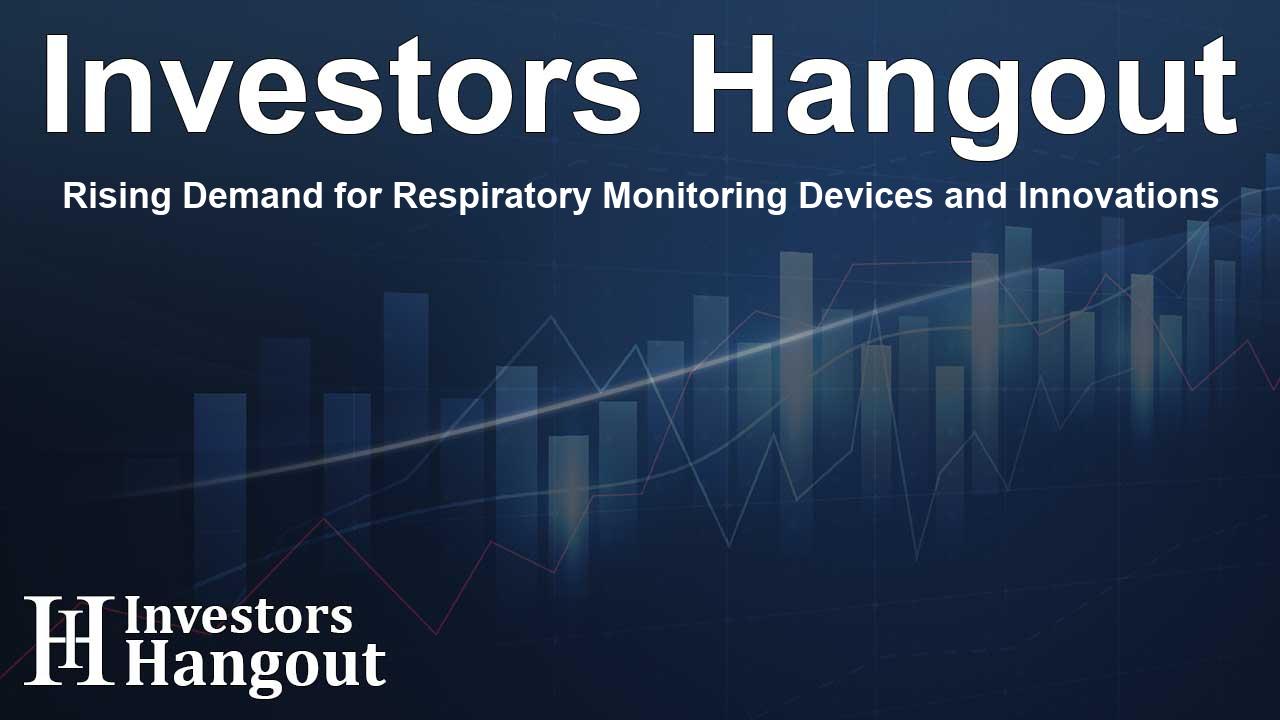Rising Demand for Respiratory Monitoring Devices and Innovations

Respiratory Monitoring Devices: Market Snapshot
The respiratory monitoring devices market is set to grow steadily over the next several years. The main reason is straightforward: more people are living with respiratory disorders and need dependable ways to track their health. Conditions like asthma, chronic obstructive pulmonary disease (COPD), and sleep apnea are increasingly common, and they all benefit from careful, ongoing monitoring. Add in a larger elderly population—at higher risk for breathing-related issues—and demand for these devices is expected to climb markedly as we move toward 2030.
What’s Driving the Expansion
A few forces are working together to push this market forward. First, diagnoses of chronic respiratory diseases continue to rise, which raises the need for long-term support and follow-up. Healthcare providers, seeing the value of continuous care, are putting money into tools that make monitoring easier, more accurate, and more routine. On the technology side, advances—especially the integration of artificial intelligence (AI) and machine learning—are improving how devices capture, analyze, and interpret respiratory data, helping clinicians and patients make faster, better-informed decisions.
New Tech Shaping Care
Technology is changing how respiratory health is tracked day to day. Wearable devices and mobile-integrated solutions now offer continuous, non-invasive monitoring that fits into a person’s normal routine. Instead of relying only on snapshots taken in a clinic, patients and clinicians can see what’s happening in real time and in the flow of daily life. The data can be shared directly with healthcare teams, supporting personalized care plans and helping people manage asthma, COPD, or sleep apnea more confidently outside traditional clinical settings.
North America’s Lead
North America currently leads the respiratory monitoring devices market, supported by a mature healthcare system and strong patient engagement. The U.S. is especially prominent, with a large population managing respiratory challenges and steady product approvals aligned with local needs. As more people look for reliable at-home options, the U.S. market is poised for a notable uptick in adoption of these technologies from 2024 to 2030.
Hurdles—and How the Industry Responds
Even with a positive outlook, the market faces real constraints. Advanced monitoring systems can be expensive, which limits access for many—particularly those in low- and middle-income segments. As devices connect to cloud services to store and manage data, privacy and cybersecurity come to the forefront. The more connected the ecosystem, the more important it becomes to protect sensitive health information and ensure that device performance remains safe and reliable.
Paths to Practical Solutions
To address these challenges, industry players are focused on lowering costs and widening access without sacrificing quality. Clearer, stronger regulations and standards can help protect patient privacy while maintaining device safety and trust. Partnerships among healthcare providers, technology companies, and device manufacturers are also crucial; by working together, they can streamline design, reduce cost, and bring user-friendly tools to more people who need them.
Looking Ahead
The momentum behind respiratory monitoring devices is solid. Investments in healthcare infrastructure—especially in emerging economies—are growing, and awareness of the value of early detection continues to spread. That combination is creating broader demand for devices that monitor respiratory rate, oxygen saturation, and other key indicators. Ongoing collaboration across the healthcare ecosystem is likely to move the field forward, with improvements in usability, accuracy, and access that help patients manage chronic conditions more effectively over time.
Frequently Asked Questions
1. What are respiratory monitoring devices used for?
They measure core aspects of breathing and lung function—such as respiratory rate, oxygen saturation, and carbon dioxide levels—to help track day-to-day health and manage chronic conditions like asthma, COPD, and sleep apnea.
2. How is technology shaping the respiratory monitoring market?
AI and machine learning are improving accuracy and interpretation, while portable and wearable devices enable real-time monitoring and easy data sharing with clinicians, supporting more personalized care outside the clinic.
3. Why is North America leading the respiratory monitoring devices market?
Advanced healthcare infrastructure, a sizable population managing respiratory disorders, and steady product approvals all support high adoption—especially as patients seek dependable at-home monitoring options.
4. What challenges does the respiratory monitoring market face?
High device costs can limit access, particularly for low- and middle-income groups. Growing use of connected, cloud-based systems also raises privacy and cybersecurity concerns that require careful safeguards.
5. What can be expected for the future of respiratory monitoring devices?
Continued growth, driven by innovation, collaboration across healthcare, and efforts to improve affordability and accessibility—trends that are expected to strengthen through 2030.
About The Author
Contact Kelly Martin privately here. Or send an email with ATTN: Kelly Martin as the subject to contact@investorshangout.com.
About Investors Hangout
Investors Hangout is a leading online stock forum for financial discussion and learning, offering a wide range of free tools and resources. It draws in traders of all levels, who exchange market knowledge, investigate trading tactics, and keep an eye on industry developments in real time. Featuring financial articles, stock message boards, quotes, charts, company profiles, and live news updates. Through cooperative learning and a wealth of informational resources, it helps users from novices creating their first portfolios to experts honing their techniques. Join Investors Hangout today: https://investorshangout.com/
The content of this article is based on factual, publicly available information and does not represent legal, financial, or investment advice. Investors Hangout does not offer financial advice, and the author is not a licensed financial advisor. Consult a qualified advisor before making any financial or investment decisions based on this article. This article should not be considered advice to purchase, sell, or hold any securities or other investments. If any of the material provided here is inaccurate, please contact us for corrections.
